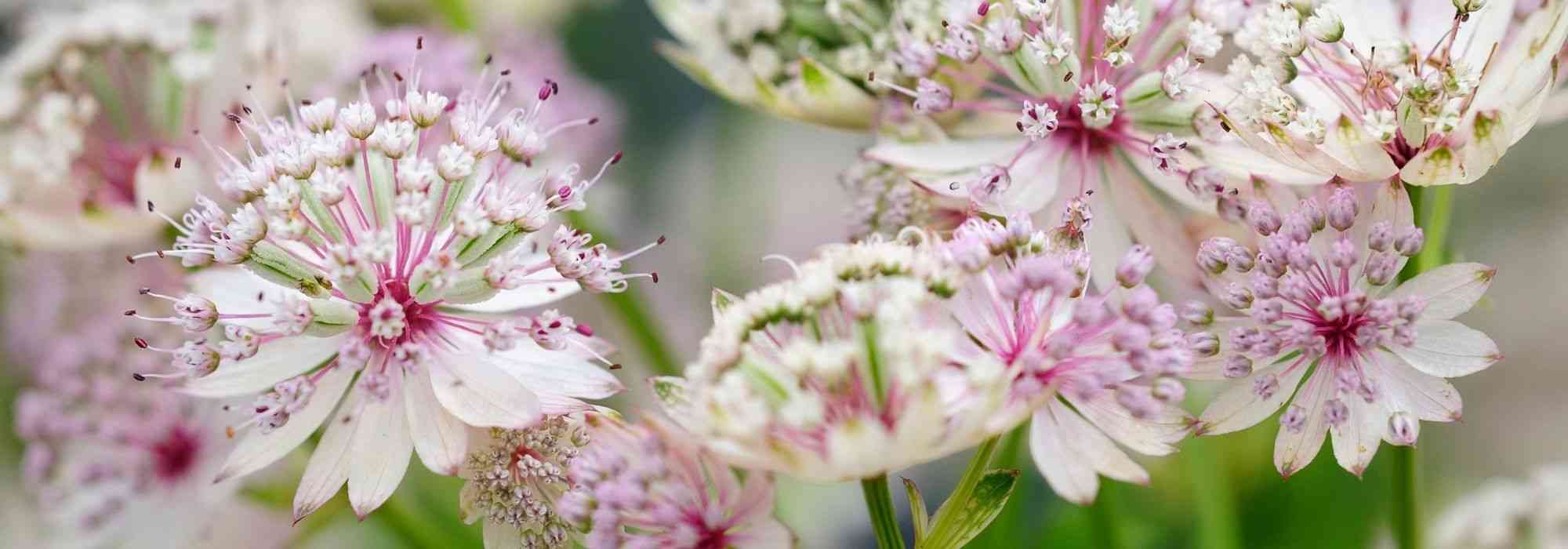
Choosing an Astrantia
Our buying guide
Contents
Valued for their refined umbels, Astrantias always evoke admiration. This umbellifer, part of the family of Angelica and certain thistles, is easy to cultivate in semi-shaded conditions, in well-drained soil that remains cool in summer. Many cultivars are softly coloured (like Astrantia major). However, there are also other, more vibrant or darker colours. It may seem that they are all very similar. Distinguishing them is not easy, but each has its own characteristics. Height, colour and size of flowers, flowering period, and usage—here are our tips to help you choose your Astrantia according to your preferences.
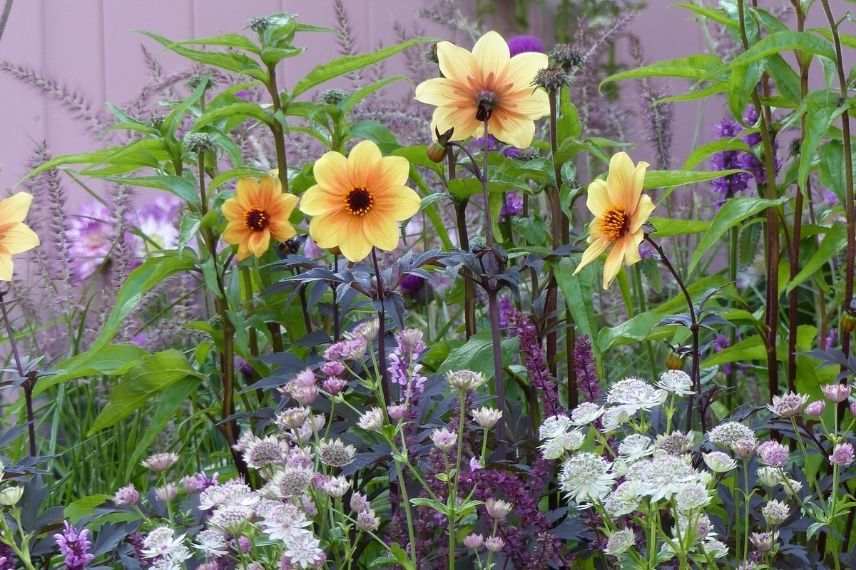
According to the colour of the flowers
It’s hard not to succumb to Astrantia! Although it is not fragrant, even pollinating insects cannot resist it. Indeed, it produces highly melliferous flowers. These, magnificent and delicate, are often pink or white and sometimes reveal subtle shades of green, mauve, and grey on their veins. However, there are also red Astrantias! Here’s an overview of the different colours available:
White-flowered Astrantias
White-flowered Astrantias are generally tinged with a slight pale touch of green, pink, or mauve. Here are some examples:
- The flowers of Astrantia major ‘Sunningdale Variegated’ consist of a collar of white surrounding a heart of small pink flowers;
- The Astrantia ‘Star of Billion’, Astrantia ‘Princesse Sturdza’, and the Great Astrantia ‘Alba’ are rather in a greenish white style, with the tips of the bracts coloured green;
- The type species Astrantia major is a beautiful blend of three colours: on a white background, with hints of pink and green that weave through these umbels;
- Those that come closest to pure white are the Astrantia major ‘Super Star’ and the Astrantia major ‘White Giant’.
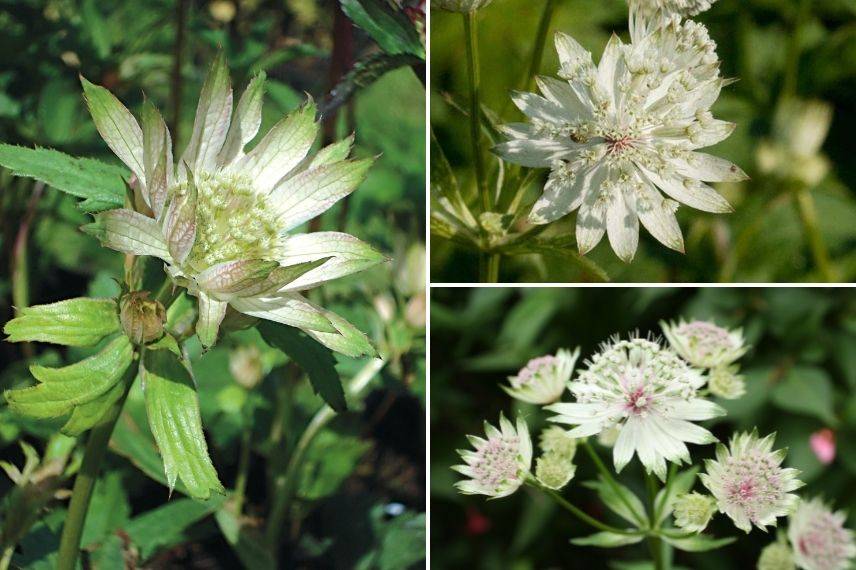
Astrantia ‘Princesse Sturdza’, Astrantia major ‘Super Star’, Astrantia major (photo darren bertram)
Pink-flowered Astrantias
Pink-flowered Astrantias are very numerous:
- In very light pale pink tones, Astrantia major ‘Pink Sensation’, ‘Buckland’, and Primadonna’ are perfect for pastel-toned gardens. The Astrantia major ‘Florence’, on the other hand, is slightly coloured with lavender pink.
- Brighter, the large Astrantias ‘Washfield’, ‘Star of Treasure’, and ‘Star of Beauty’ bring cheer to the flowerbeds.
- Finally, in intermediate shades, neither too bright nor too soft, we can mention the Large Astrantias ‘Rosensinfonie’ and ‘Star of Passion’.
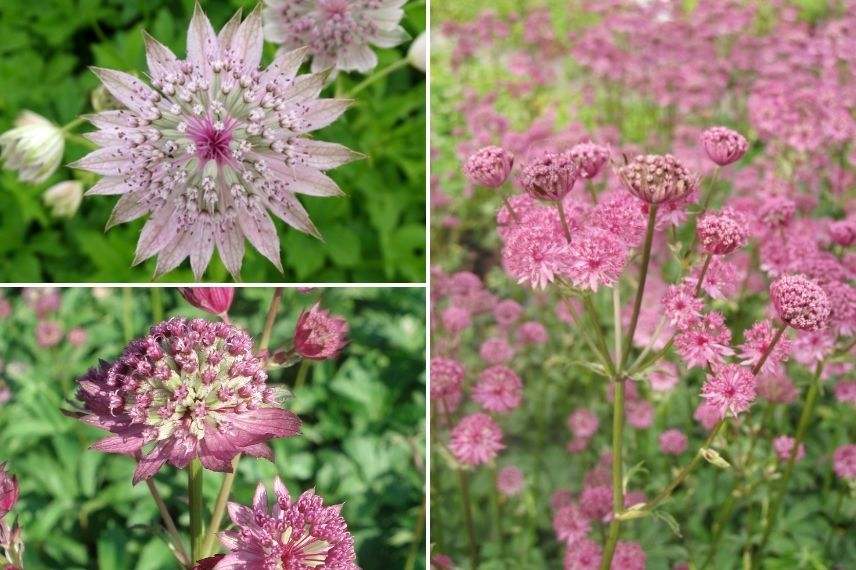
Astrantia major ‘Pink Sensation’, Astrantia ‘Star of Passion’ and Astrantia ‘Star of Beauty’
Red-flowered Astrantias
Red Astrantias come in various shades:
- The Astrantia major ‘Claret’ and ‘Rubra’ are situated between red and pink;
- The Astrantia major ‘Hadspen Blood’, Astrantia major ‘Ruby Star’, or the Astrantia major ‘Ruby Wedding’ are adorned with wine red;
- Finally, the darkest of our collection is certainly the Astrantia major ‘Moulin Rouge’.
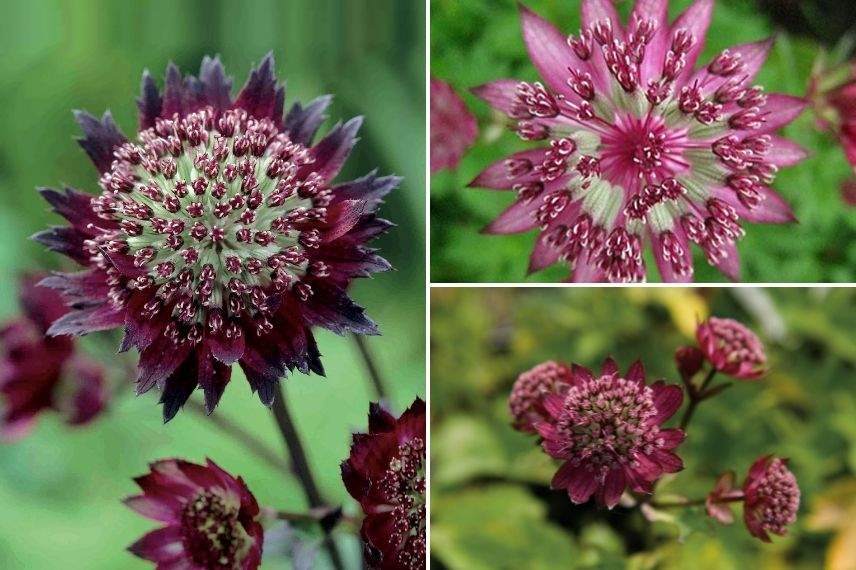
Astrantia major ‘Moulin Rouge’, Astrantia major ‘Claret’ and Astrantia ‘Hadspen Blood’
According to the size of flowers
The size of Astrance flowers varies between 3 and 7 cm depending on the variety.
In general, the flowers of Astrances do not exceed 3 cm, as seen in Astrantia minor, which bears the smallest flowers, and many of the Great Astrances. For example, Astrantia major ‘Pink Pride’, ‘Star of Billion’, and Astrantia major ‘Rosea’ offer us beautiful soft pink flowers.
Some exceptions among the large Astrances display slightly larger flowers, measuring 5 cm. One can mention the Great Astrance ‘Venice’ with its beautiful deep pink, or conversely, the very pale Astrantia major ‘Pink Sensation’.
Even better, Astrantia maxima with its large bracts and Great Astrance ‘Shaggy’ stand out for their magnificent flowers that can reach up to 7 cm in diameter!
Discover also our article on the largest umbels of Astrance.
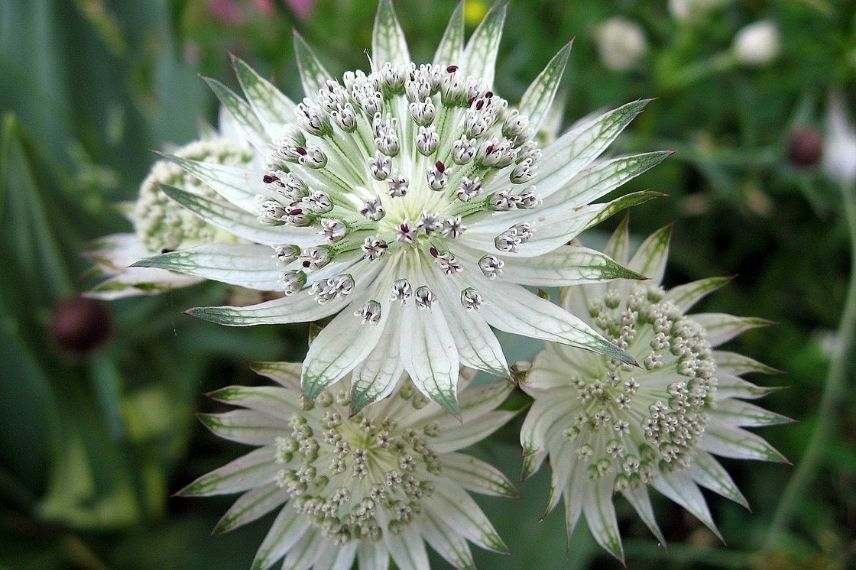
Astrantia major ‘Shaggy’ (photo pastilletes)
Discover other Astrantia - Masterwort
View all →Available in 0 sizes
Available in 0 sizes
Available in 3 sizes
Available in 3 sizes
Available in 0 sizes
Available in 1 sizes
Available in 3 sizes
Available in 2 sizes
Available in 2 sizes
Available in 2 sizes
According to the foliage
Even though the differences in foliage are not striking among the varieties of Astrantia major (most have very similar leaves: palmate, dentate, and medium to dark green in colour), it is worth noting that the Astrantia major ‘Sunningdale Variegated’ is a variegated foliage variety! These green leaves edged in cream are perfect for brightening a shady border.
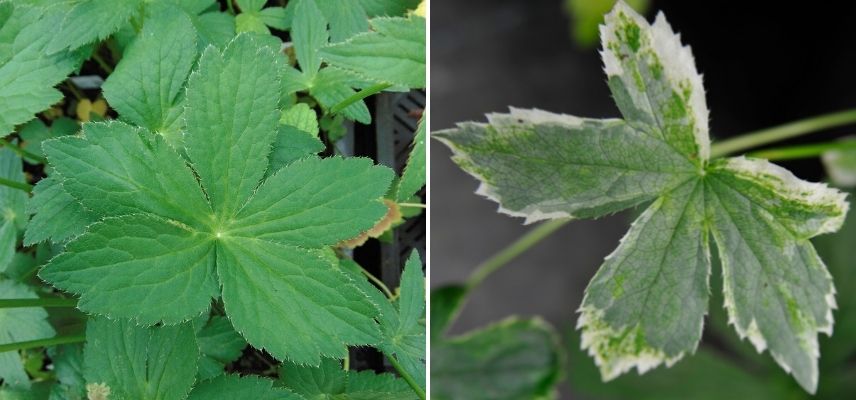
On the left, Astrantia major ‘Rosea’ and on the right, the variegated foliage of Astrantia ‘Sunningdale Variegated’ (photo MeganEHansen)
Read also
Astrantias: the largest umbelsAccording to height
A classic of English gardens and vicarage gardens, Astrantia has a bushy habit, particularly ramified and can be more or less compact or loose. Its low foliage is topped by long, erect flower stems. Astrantias can be classified into two size categories:
Small – between 40 cm and 50 cm tall
Among the smallest Astrantias around 40 cm tall with a spread of 35 cm and perfect for mixed borders, we can mention Astrantia maxima, Great Astrantia ‘Hadspen Blood’, and the highly ramified Astrantia major ‘Star of Treasure’. With a slightly looser habit, Astrantia major ‘Sunningdale Variegated’ still forms a lovely bush, just like Astrantia ‘Princesse Sturdza’ with a tuft of 50 cm in all directions.
Large – around 60 cm to 70 cm tall
The vast majority of Astrantias are about sixty centimetres tall, including many varieties of Astrantia major, such as the cultivar ‘Claret’. Due to their dense habit, these are ideal as a backdrop in a border: Astrantia major ‘Rosensinfonie’, Astrantia major ‘Ruby Cloud’, Astrantia ‘Star of Billion’, or Astrantia major ‘Lars’. Their tuft generally spreads 30 to 45 cm in diameter.
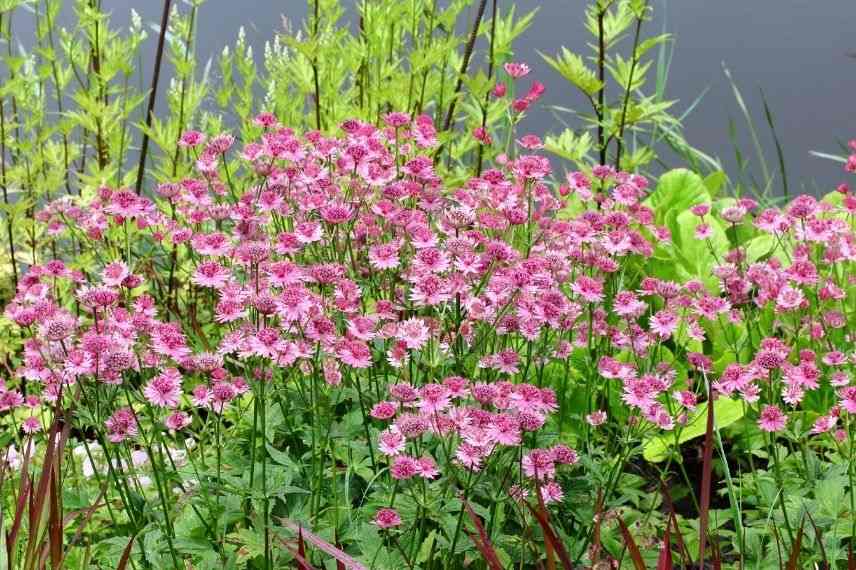
Astrantia major ‘Rosensinfonie’ (photo Dominicus Johannes Bergsma)
According to the flowering period
Generally, Astrantias flower between June and September (for example, ‘Hadspen Blood’, ‘Star of Billion’, and ‘Roma’). To encourage repeat flowering, we recommend regularly cutting back faded flower stems throughout the summer.
However, some varieties treat us to a longer summer flowering period! Early bloomers, they begin to show their first flowers as early as May, continuing late into October. In this case, we can mention the highly repeat flowering Astrantia major ‘Super Star’ and Astrantia major ‘Ruby Star’.
In contrast, note that one Astrantia has a shorter flowering period than the others, from June to July: the Astrantia maxima.
Depending on the use
Often found in English gardens, Astrantias are versatile and can be used in many situations.
- They bring lightness and a touch of elegance to flower beds or borders in partial shade. They easily pair with roses and many perennials. They can also be planted at the base of bushes forming a hedge.
- They also find their place in a cool rockery. For this, choose a small variety, such as Astrantia major ‘Star of Treasure’.
- With its country style, it integrates perfectly into a flowering meadow. For example, the simple yet graceful Astrantia ‘Princesse Sturdza’ fits in very well.
- Growing Astrantia in pots can be challenging. You can try it as long as you place it in a deep container and water it frequently during the summer.
- Astrantias make excellent cut flowers for creating beautiful fresh or dried bouquets from spring to autumn.
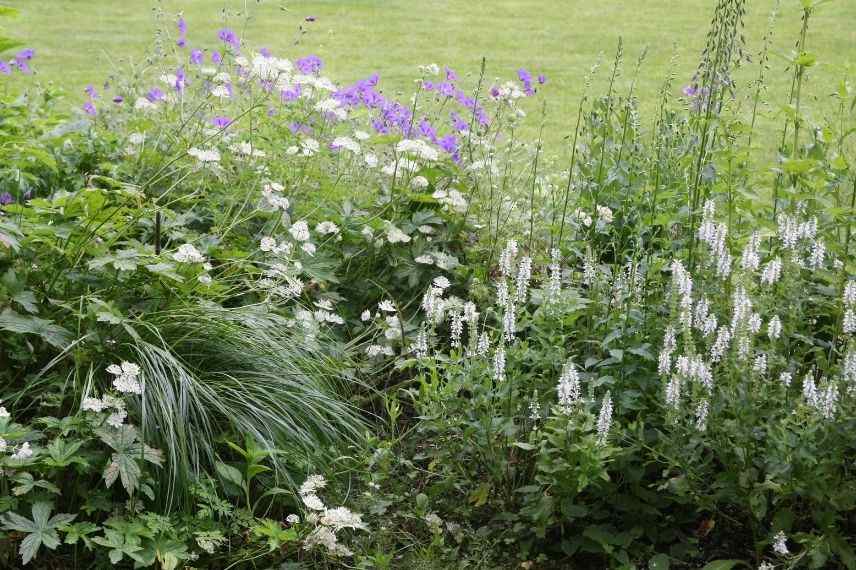
- Subscribe!
- Contents
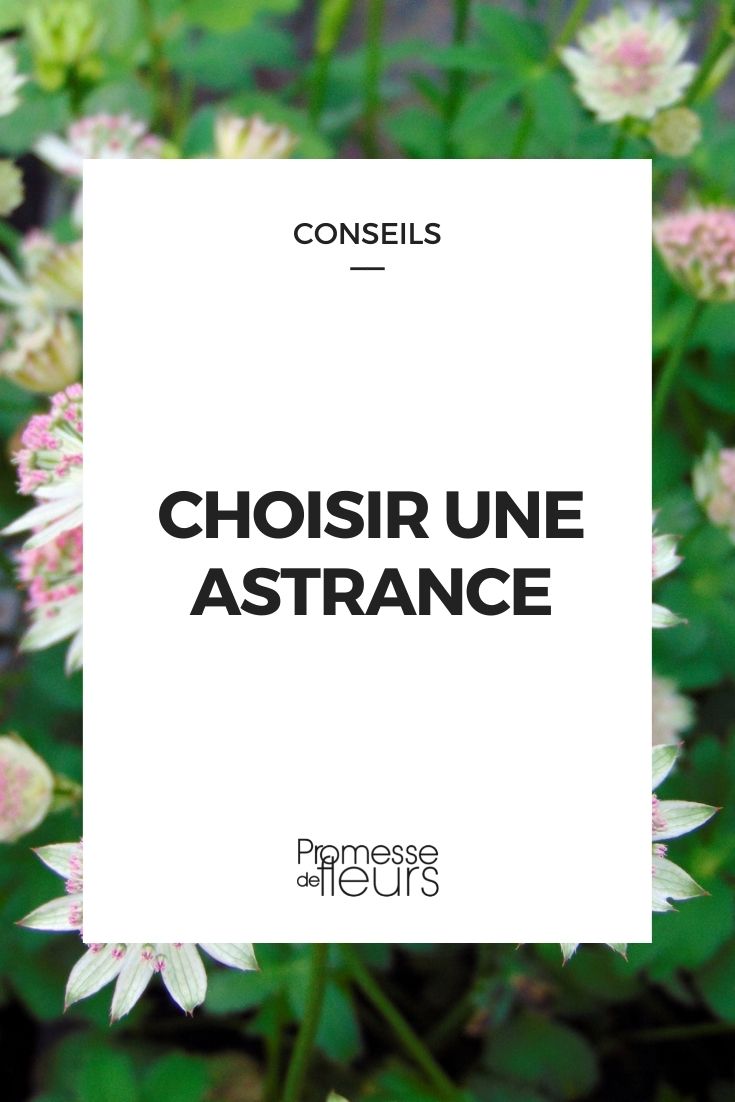































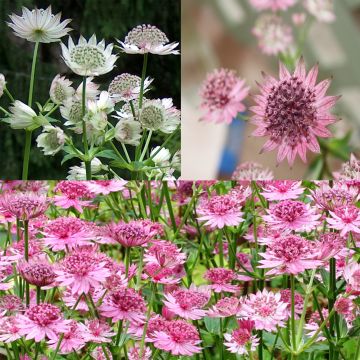
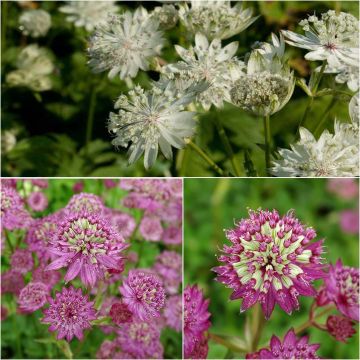
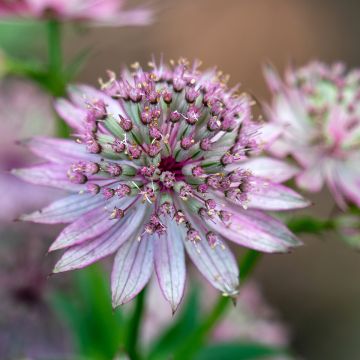
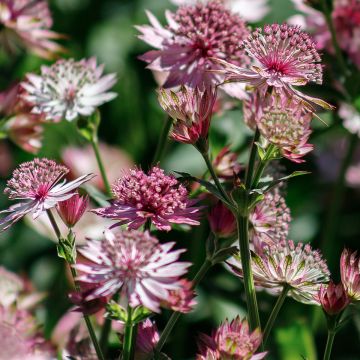
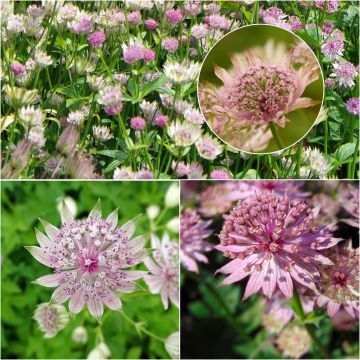
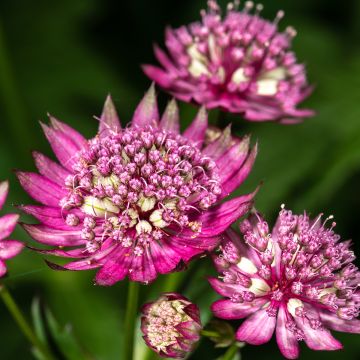
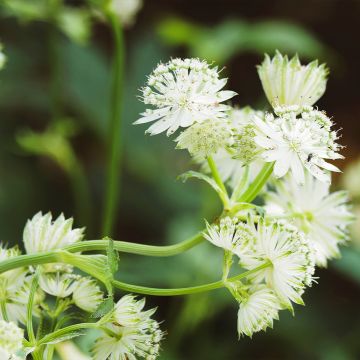
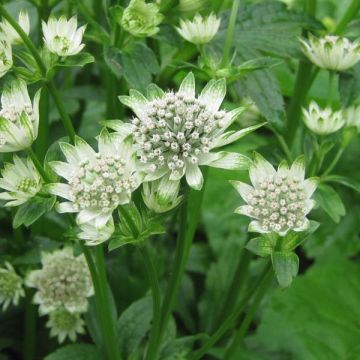
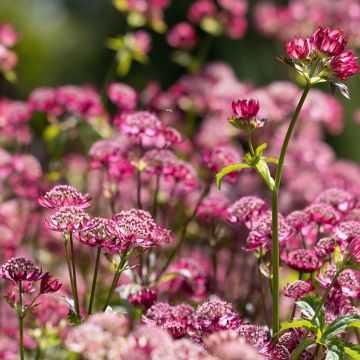
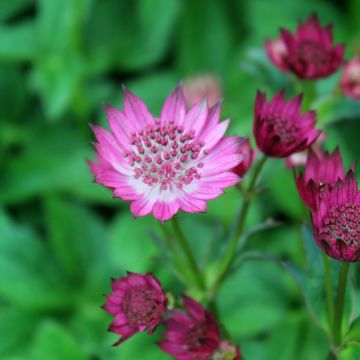
Comments